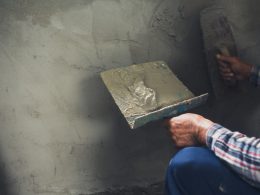Introduction
In the hospitality industry, making guests feel comfortable is very important. One big part of that comfort is how hotels take care of their bed sheets and towels. Keeping these linens at the right temperature helps guests feel happy, keeps the linens lasting longer, and makes hotel work more efficient.
To make sure everything is working well, hotels can do a linen audit. This means checking how linens are used, cleaned, and stored. A good linen audit helps hotels find ways to do better and make guests even more comfortable.
This article explains how hotels can check their linens to keep temperatures just right. It also talks about the important job of the hotel linen supplier and gives useful tips for hotels in Bangalore and other places.
Understanding the Importance of Linen and Temperature Management
Linen is very important for making hotel rooms feel cozy and nice. The temperature of things like bed sheets and towels can change how guests feel about cleanliness, freshness, and comfort. If the linens are too warm or a little wet, guests might feel uncomfortable. If they are too cold or too dry, they might not feel very welcoming.
To fix this, hotels need to take good care of their linens. This means washing, storing, and using them in the right way to keep the right temperature and moisture. When hotels do this well, their sheets and towels feel soft, clean, and fresh. This also helps the hotel look more professional and trustworthy.
The Role of a Linen Audit in Enhancing Temperature Management
A linen audit is a systematic review of a hotel’s linen inventory, usage, and maintenance practices. It helps identify inefficiencies, monitor linen condition, and develop strategies to optimize temperature control throughout the linen lifecycle.
Conducting regular linen audits allows hotels to:
- Assess linen quality and condition
- Identify linens that require replacement or repair
- Evaluate laundering and drying processes
- Ensure linens are stored at appropriate temperatures and humidity levels
- Optimize inventory levels to prevent overuse or shortages
Step-by-Step Guide to Conducting a Linen Audit for Temperature Management

1. Planning and Preparation
Before initiating the audit, establish clear objectives focusing on linen quality, temperature control, and operational efficiency. Assemble a team comprising housekeeping staff, laundry managers, and procurement officers.
Gather relevant documentation, including:
- Linen inventory records
- Laundering process details
- Maintenance schedules
- Storage facility specifications
Identify key areas for assessment: laundry processes, storage conditions, linen usage, and guest feedback.
2. Inventory Assessment
Begin by taking a comprehensive inventory of all linen items, including bed sheets, pillowcases, towels, and table linens. Record their quantities, types, and current condition.
Evaluate whether linens are appropriate for the climate and guest preferences. For example, in warmer climates, lightweight, breathable linens may be preferable.
3. Assessing Linen Condition and Quality
Inspect linens for signs of wear, pilling, color fading, or lingering odors. Damaged or worn linens may not respond well to temperature management processes and might need replacement.
Pay particular attention to the linen’s ability to retain softness and freshness after laundering, which is influenced by proper temperature control during washing and drying.
4. Evaluating Laundry and Drying Processes
This step is critical for temperature management. Review laundering procedures to ensure:
- Washing Temperatures:Use appropriate wash temperatures for different linen types to effectively remove dirt and bacteria without damaging the fabric. Higher temperatures (60°C to 90°C) are often used for hospital-grade cleanliness, while lower temperatures may suffice for guest linens.
- Drying Techniques: Use suitable drying temperatures and times to prevent overdrying, which can make linens stiff, or underdrying, which can leave linens damp and prone to mildew.
Consult with your hotel linen supplier or hotel linen suppliers in Bangalore to select linens compatible with your laundering equipment and processes.
5. Monitoring Storage Conditions
Proper storage is vital for maintaining linen quality and temperature. Linen storage areas should have:
- Controlled humidity levels (ideally between 50-60%) to prevent mold and mildew.
- Adequate ventilation to avoid dampness.
- Consistent temperature levels, typically room temperature, to prevent linen degradation.
Use hygrometers and thermometers to monitor conditions regularly. Address any issues such as excessive humidity or temperature fluctuations.
6. Analyzing Linen Usage and Turnover
Track how often linens are used and replaced. High turnover rates may indicate overuse or inefficient laundry practices, affecting linen quality and temperature management.
Implementing linen rotation schedules ensures even wear and prolongs linen lifespan. It also helps in planning laundry loads to optimize energy consumption and drying times.
7. Gather Guest Feedback
Guest reviews and feedback can reveal insights into linen comfort and cleanliness, indirectly indicating how well temperature management practices are working. Complaints about damp or stiff linens suggest a need for process improvement.
8. Implementing Improvements Based on Audit Findings
After completing the linen audit, develop an action plan addressing identified issues:
- Upgrade Linen Quality: Partner with reputable hotel bed sheet suppliers or hotel linen suppliers in Bangalore to source linens that respond well to your laundering and drying processes.
- Optimize Laundry Processes: Adjust washing and drying temperatures and durations based on linen fabric specifications.
- Enhance Storage Conditions: Invest in climate-controlled storage areas if necessary.
- Train Staff: Educate housekeeping and laundry staff on best practices for temperature management during laundering and storage.
- Establish Regular Monitoring: Schedule periodic audits to ensure ongoing compliance and continuous improvement.
Benefits of Effective Linen and Temperature Management
Implementing a thorough linen audit and applying its findings can lead to numerous benefits:
- Enhanced Guest Comfort: Well-maintained linens that are appropriately washed and stored contribute to a comfortable sleep environment.
- Operational Efficiency: Optimized laundering reduces energy consumption and prolongs linen lifespan.
- Cost Savings: Proper temperature control minimizes linen damage and reduces replacement costs.
- Brand Reputation: Consistently fresh and comfortable linens reinforce a hotel’s commitment to quality, attracting repeat guests.
Conclusion
Conducting a comprehensive linen audit is a strategic approach to improving temperature management within hotel operations. By systematically assessing linen quality, laundering processes, storage conditions, and usage patterns, hotels can identify areas for improvement and implement targeted solutions. Partnering with reputable hotel linen suppliers and hotel linen suppliers in Bangalore ensures access to high-quality linens suited to specific laundering requirements.
Ultimately, effective linen management enhances guest satisfaction, operational efficiency, and brand reputation. Regular audits and continuous process improvements are essential to maintaining optimal temperature conditions and delivering a consistently superior guest experience.












